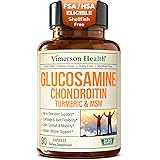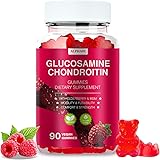- Introduction to Anti Inflammatory Joint Support
- 1. Adopting an Anti-Inflammatory Diet
- 2. Incorporating Omega-3 Fatty Acids
- 3. Regular Low-Impact Exercise Routines
- 4. Using Natural Supplements and Herbs
- 5. Maintaining a Healthy Body Weight
- 6. Prioritizing Adequate Sleep and Stress Management
- 7. Utilizing Physical Therapy and Manual Techniques
- 8. Applying Hot and Cold Therapy
- 9. Avoiding Joint-Inflammation Triggers
- 10. Staying Informed with the Latest Research
Introduction to Anti Inflammatory Joint Support
When dealing with joint pain and inflammation, finding effective strategies to support joint health is essential. In 2025, the focus on anti inflammatory joint support has grown, combining natural remedies, lifestyle adjustments, and latest science to help people lead active, pain-free lives. Whether you’re battling arthritis, sports injuries, or general wear-and-tear, understanding these strategies can make a significant difference. This comprehensive guide will walk you through ten proven methods to boost your joint health and reduce inflammation naturally.
1. Adopting an Anti-Inflammatory Diet
Understanding the Role of Nutrition in Joint Inflammation
Proper nutrition plays a pivotal role in managing joint inflammation. An anti-inflammatory diet focuses on foods that help reduce swelling and support tissue repair. In 2025, more people are turning to whole, nutrient-dense foods to improve their joint health naturally. Incorporating fruits, vegetables, nuts, and seeds can significantly impact inflammation levels. For example, berries and leafy greens contain antioxidants that combat oxidative stress, a key factor in inflammatory processes.
Many studies have linked dietary patterns to joint health, with the Mediterranean diet being notably effective. Rich in omega-3 fatty acids, fiber, and healthy fats, this diet helps lower inflammatory markers like C-reactive protein (CRP). Transitioning to an anti-inflammatory diet can be as simple as swapping processed foods for whole, plant-based options and reducing sugar intake.
Practical Tips to Start Today
Begin by planning your meals around anti-inflammatory staples. Incorporate turmeric and ginger into your cookingâthey are renowned for their anti-inflammatory properties. Additionally, avoid trans fats and excessive refined carbohydrates, which can worsen joint inflammation. Keep a food journal to track which foods improve or exacerbate your symptoms. Small, consistent dietary changes can lead to significant improvements over time.
The Best Joint Support (Naturally) Starts with Organic Nutritional Support!
Get 40% Off Here ...
2. Incorporating Omega-3 Fatty Acids
The Power of Omega-3s in Reducing Joint Inflammation
Omega-3 fatty acids, primarily EPA and DHA, are vital for reducing joint inflammation. Clinical research consistently shows that omega-3 supplementation can decrease joint stiffness and pain, especially in rheumatoid arthritis sufferers. In 2025, high-quality omega-3 supplements are among the top recommended strategies for anti inflammatory joint support.
Foods rich in omega-3s include fatty fish like salmon, mackerel, sardines, and flaxseeds. Including these in your diet a few times a week can help modulate your immune response and promote joint comfort. Supplements are also available for those who donât consume enough fish, but always consult with a healthcare provider before starting new supplements.
Actionable Tips for Enhancement
Aim for at least 250-500 mg of combined EPA and DHA daily. Check labels carefully to ensure potency. Incorporate omega-3-rich foods into your meals or consider fish oil capsules if needed. Remember, consistency is keyâregular intake can lead to sustained improvement in joint health.
3. Regular Low-Impact Exercise Routines
Why Exercise Supports Anti Inflammatory Joint Support
Staying active is one of the most effective strategies for managing joint inflammation. Low-impact exercises like swimming, cycling, and yoga help maintain joint mobility and reduce stiffness without putting excessive stress on your joints. In 2025, experts emphasize tailored exercise plans to support inflammatory joint conditions.
Exercise also stimulates circulation, which helps deliver nutrients to joint tissues and remove inflammatory waste products. Additionally, maintaining muscle strength around the joints reduces strain and protects against injury. Regular activity has been shown to lower inflammatory markers in the body, contributing to overall joint health.
Tips for Safe Implementation
Start slow and gradually increase intensity. Incorporate stretching and flexibility routines to improve range of motion. Always listen to your body and stop if you experience pain. Consult with a physical therapist to develop a personalized plan that aligns with your specific needs and limitations.
4. Using Natural Supplements and Herbs
Effective Natural Alternatives for Inflammation Management
Many natural supplements have demonstrated anti-inflammatory benefits, making them popular for anti inflammatory joint support. Turmeric, with its active compound curcumin, is widely used to reduce joint swelling and pain. In 2025, formulations with enhanced bioavailability are more accessible, providing better results.
Other herbs like Boswellia Serrata and Devilâs Claw also support joint health by modulating inflammatory pathways. Incorporating these supplements, under professional guidance, can complement diet and physical activity to provide a holistic approach to joint support.
Best Practices and Considerations
Always choose high-quality, standardized supplements to ensure potency. Combining herbs like turmeric with black pepper enhances absorption. Remember to discuss supplement intake with your healthcare providerâespecially if you are on medications or have underlying health conditions. Natural doesnât always mean without risks, so proper guidance is essential.
5. Maintaining a Healthy Body Weight
The Impact of Weight on Joint Inflammation
Excess weight places additional stress on weight-bearing joints such as the knees and hips, exacerbating inflammation and pain. Research shows that losing even a small percentage of body weight can significantly reduce joint symptoms. In 2025, weight management is a cornerstone of anti inflammatory joint support strategies.
Dietary changes combined with regular exercise create a sustainable approach to weight loss. Focus on nutrient-dense foods that keep you full longer and support your joint health. Maintaining a healthy weight not only reduces inflammation but also lowers the risk of developing further joint degeneration.
Practical Tips for Weight Management
Set realistic goals and track your progress. Incorporate both cardiovascular and resistance training to optimize fat loss and muscle strength. Seek support from nutritionists or health coaches for personalized plans. Remember, gradual, consistent changes are more sustainable and effective over the long term.
6. Prioritizing Adequate Sleep and Stress Management
How Sleep and Stress Influence Joint Inflammation
Quality sleep and stress reduction are often overlooked but powerful factors in managing joint inflammation. Poor sleep increases inflammatory markers, making symptoms worse, while chronic stress can impair immune responses. In 2025, holistic approaches include incorporating relaxation techniques to support anti inflammatory joint support.
Practices such as mindfulness meditation, deep breathing exercises, and proper sleep hygiene help regulate hormones like cortisol, which influences inflammation levels. Aim for 7-9 hours of restful sleep each night for optimal joint health.
Actionable Lifestyle Tips
Create a calming pre-sleep routine, avoid screens before bed, and maintain a consistent sleep schedule. Manage stress through regular mindfulness or yoga sessions. These combined efforts can help lower inflammatory responses and protect your joints.
7. Utilizing Physical Therapy and Manual Techniques
Benefits of Professional Physical Support
Working with physical therapists can improve joint mobility and reduce inflammation effectively. Techniques include manual therapy, stretching, and targeted exercises that strengthen supporting muscles. In 2025, advancements in physiotherapy focus on minimally invasive techniques tailored to individual needs.
Physiotherapists also provide education on joint protection and compensatory strategies to minimize strain during daily activities. Regular sessions can prevent further joint damage and improve overall function.
DIY and Home-Based Therapy
Incorporate simple stretching routines and gentle massage techniques at home. Use tools like foam rollers and resistance bands to enhance mobility and muscle strength. Always consult a professional before starting new routines to ensure safety and effectiveness.
8. Applying Hot and Cold Therapy
How Thermal Treatments Help Reduce Inflammation
Applying heat or cold to inflamed joints can provide immediate relief and support anti inflammatory joint support. Cold therapy decreases blood flow, reducing swelling and numbing pain, while heat relaxes muscles and improves circulation.
In 2025, innovative heat wrap designs and cold packs with adjustable settings make self-care convenient and effective. Alternating between hot and cold treatments can maximize benefits for chronic conditions and injuries.
Practical Application Tips
Use cold packs for acute flare-ups for 15-20 minutes. Apply heat before exercise or activity to improve flexibility. Always protect the skin and avoid direct contact with extreme temperatures. Consistent use can enhance joint comfort and reduce inflammation over time.
9. Avoiding Joint-Inflammation Triggers
Common Dietary and Environmental Triggers
Identifying and avoiding specific triggers can significantly enhance anti inflammatory joint support. Common culprits include processed foods, excessive sugar, alcohol, and smoking. Environmental factors like pollution and allergens may also exacerbate inflammation.
Keeping a symptom diary helps pinpoint personal triggers. Removing or limiting these factors enables better control over joint inflammation and promotes overall health.
Practical Strategies to Minimize Triggers
Choose fresh, whole foods over processed options. Stay hydrated and limit intake of inflammatory beverages. Use air purifiers indoors and practice good hygiene to reduce exposure to environmental irritants.
10. Staying Informed with the Latest Research
Emerging Trends in Anti Inflammatory Joint Support
In 2025, continuous advancements in medical research provide new insights into effective joint support strategies. Staying updated with reputable sources ensures you are using the most effective, evidence-based approaches. Innovations include novel supplements, regenerative medicine, and personalized treatment plans.
Attending webinars, reading scientific journals, and consulting healthcare professionals helps in making informed decisions. Being proactive about your health maximizes your chances of maintaining joint resilience for years to come.
Resources for Ongoing Education
Subscribe to reputable health sites and join support groups focused on joint health. Use apps and tools that track inflammation and symptom patterns. Regularly updating your knowledge makes it easier to adapt and optimize your anti inflammatory joint support strategies over time.
Frequently Asked Questions
1. What is the best way to support anti inflammatory joint health in 2025?
The most effective approach combines a nutrient-rich anti-inflammatory diet, regular low-impact exercise, targeted supplements, and lifestyle modifications focused on sleep and stress management.
2. How long does it take to see results from anti-inflammatory strategies?
While some improvements can be noticed within weeks, significant and sustained benefits typically require consistent practice over several months. Patience and commitment are key.
3. Can supplements replace traditional treatments for joint inflammation?
Supplements can complement traditional medical treatments, but they should not replace prescribed medications without consulting your healthcare provider. Always seek guidance for personalized care.
4. Is it possible to completely eliminate joint inflammation?
Complete elimination may not be realistic for everyone, especially with chronic conditions. However, with rigorous adherence to anti inflammatory joint support strategies, many individuals can significantly reduce symptoms and improve quality of life.
Conclusion
In 2025, prioritizing anti inflammatory joint support is more important than ever. By adopting a holistic approach that includes diet, exercise, natural supplements, stress management, and staying informed about new research, you can effectively reduce joint inflammation and maintain your mobility. Remember, consistency and personalized care are your best allies in supporting healthy joints naturally and sustainably. Implement these strategies today and enjoy a more active, pain-free life tomorrow.




























